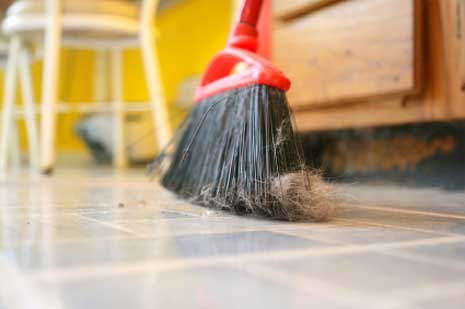House Dust, the Underrated Hidden Danger
Who likes to clean dust? Honestly, I do not, but what must be done, must be done, especially if one reacts violently to household dust mites. The mites are not the only problem, and certainly not the greatest.
Household dust is not a matter that is relevant only for housewives, because apart from the annoyance of constant clean up, it is also one of the largest sources of pollution for the whole family. It offers a welcome reservoir for heavy metals, anti-flame retardants, pesticides and plasticizers. Children are particularly at risk since they have direct contact as they often play on the floor and put things into their mouths. Because children are still in a stage of development, pollution can have significant effects. Lead, in particular, can affect the nervous system. A further complication is that their body organs are also still in the developmental phase, including the organs that detoxify the contaminants. Sensory and chemical allergies are another risk factor.
Dust: A Source of Pollution in the Home
Canadians launched a national study of house dust over a four-year period. (1) It is already becoming apparent that the whole problem, which is associated with the dust in our homes is very underestimated. Furniture, electronics, building materials, even toys have one thing in common. They are constantly emitting gases of harmful substances. These are bound up in house dust and distributed throughout the living area. If the resulting dust is not removed regularly, a high source of a potential pollution exists. Children are particularly at risk because they suffer from hand-mouth contact quickly through exposures which the scientists from Health Canada have already made known.
From the Street to the House
It is still largely unknown to scientists where all the components of household dust come from. One known source is certainly the dust that is introduced by our shoes into the house. With this, not only bacteria and germs are introduced, but also particles of pollutants from road traffic, pesticides, chemicals, molds, pollen and more. Especially in rural areas, for example, the pesticide pollution from agriculture is often disproportionately high, so there, it’s important to leave the shoes at the front door. (2,3)
What’s so Bad About Dust?
House dust is serious, because it consists mostly of fine dust that is can enter the respiratory track and therefore immediately enter the blood stream. With certain chemicals and metals, this is especially pronounced. They can affect the memory as these poisons accumulate in our bodies. Some of these memory poisons, such as those in most household dust like anti- polybrominated flame retardants, will remain years to decades in our bodies. During this period other new substances are constantly added which brings not just interactions with other chemicals, but will inevitably also have further health consequences.
Heavy metals like lead and mercury, for example, which accumulate in house dust, are found in some indoor concentrations which are higher than they are in water or soil around the home environment. As a further complication, common allergens from pets, dust mites, pollen and mold, which burdens the immune system of allergy sufferers as well.
Dusting is required
In order to limit the hazard of household dust, regular thorough vacuuming and wiping up or mopping is required. Frequent hand washing, especially in children, helps to reduce the burden. Everyone should always take off their shoes upon entering the living space, particularly to reduce the introduction of heavy metals and pesticides. In flame retardants, which are found in large quantities in household dust, it is difficult, because home appliances, upholstered furniture, and other household items are constantly giving off gases which are hard to prevent. The best solution is to keep dust and its health consequences at bay. In addition to the aforementioned measures, it is important to use the vacuum, dust clothes, and mop in and around the home as much as possible to reduce the exposure to chemicals. It will take scientists some time to discover the affects and the consequences from chemicals and other factors in household dust.
Author: Silvia K. Müller, CSN – Chemical Sensitivity Network
Literature:
- Health Canada, The Canadian House Dust Study, January 30, 2007
- Chensheng Lu2, Richard A. Fenske, Nancy J. Simcox and David Kalman, Pesticide Exposure of Children in Agricultural to Community: Evidence of Household Proximity to Farmland and Take Home Exposure Pathways, Environmental Research, Volume 84, Issue 3, November 2000, Pages 290-302
- NJ Simcox, RA Fenske, SA Wolz, IC Lee, and DA Kalman, Pesticides in household dust and soil: exposure pathways for children of agricultural families, Environ Health Perspect. 1995 December, 103 (12): 1126-1134.


